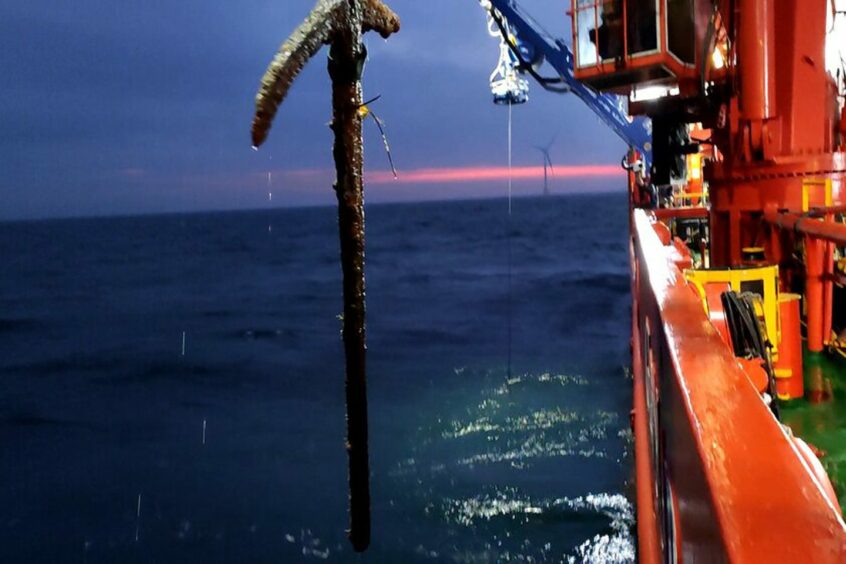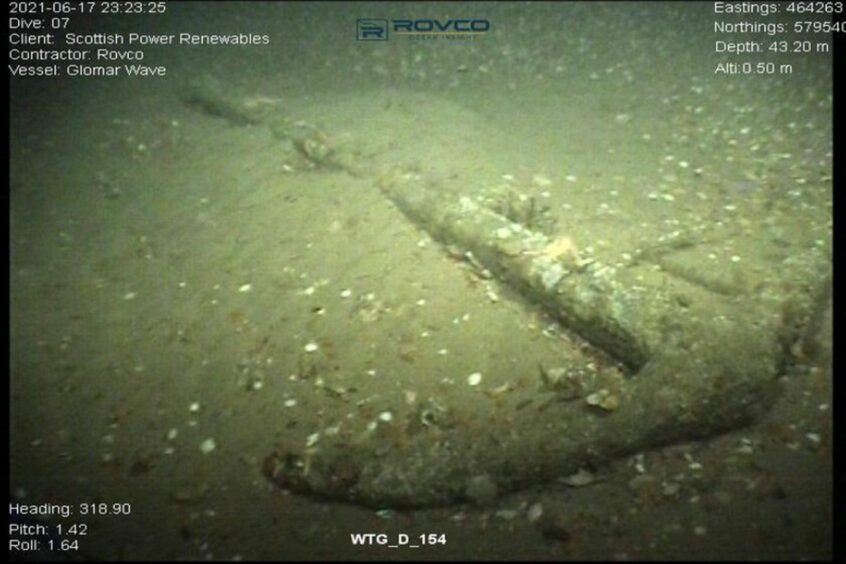
Possible Iron Age anchor was found at the bottom of the southern North Sea during survey works for ScottishPower Renewables’ East Anglia ONE offshore wind farm.
The artefact is believed to be from the Roman or possibly late Iron Age, meaning it is between 1,600-2,000 years old.
It is thought that the discovery could provide evidence of ancient Roman seafaring and trading in the southern North Sea, off the coast of the East of England.
The 15.75 stone, 6.6-foot long anchor is believed to have once been attached to a vessel weighing 500-600 tonnes and was recovered from a depth of more than 140 feet.
If the discovery proves to be Roman, the anchor would have likely come from one of the larger merchant ships of the Roman fleet.
Although not confirmed the artefact sports several features that suggest the anchor could come from the Imperial Roman period.
First discovered by ScottishPower while conducting a marine seabed survey prior to the construction of its East Anglia ONE offshore wind farm in 2018, the relic was found around 25 miles off the coast of Suffolk.
Protected by an exclusion zone installed on the seabed during the construction works and monitored using remote underwater technology due to concerns over its long-term preservation, the anchor was safely and carefully recovered from the water in 2021.
Not the first discovery
This is not the first historic artefact ScottishPower has uncovered while carrying out work on the East Anglia ONE wind farm.
Other discoveries include:
- A missing German submarine from the First World War almost 100 years after it disappeared while on patrol.
- Numerous artefacts from the Bronze Age, Iron Age, Roman and Medieval periods.
- A prehistoric monument – dating back more than 4,000 years – complete with a rare Neolithic wooden trackway and platform and an ancient wild cattle (Auroch) skull radiocarbon-dating to around over 6,000 years old, which formed one of Europe’s largest archaeological digs in recent years.
The conservation works are being carried out by ScottishPower Renewables’ commissioned specialists Maritime Archaeology in collaboration with the Mary Rose Archaeological Services, and with advice and guidance throughout the process from Historic England’s material science experts.
East Anglia ONE ‘anchored its place in maritime history’
ScottishPower Renewables’ Managing Director – East Anglia Hub, Ross Ovens, said: “Our East Anglia ONE windfarm has proven to be an archaeological treasure trove – both onshore and offshore – and this latest find shows that it just keeps giving.
“As part of the Iberdrola Group, we pride ourselves on the sensitive way in which we approach our offshore projects across the world to ensure that their environment and heritage are protected and preserved and it’s fascinating to see what that means in practice.
“The East Anglia ONE finds will tell us so much not just about East Anglia’s history itself, but also the region’s place in British history.
“This is very much the icing on the cake when we consider the obvious benefits of East Anglia ONE – clean, green electricity for hundreds of thousands of homes; massive regional investment that put multi-million sums into the hands of local businesses and suppliers while supporting thousands of jobs; and a successful skills and education programme that included the creation of our first offshore apprentice programme. That’s a brilliant track record.
“The anchor recovery has been a real team effort. My thanks to everyone involved for their dedication to protecting and raising this amazing piece of maritime and social history. I can’t wait to see what more we can find out about it – or what else we might find!
“Regardless of what is still to come, it’s clear East Anglia ONE has already anchored its place in maritime history and we’re very proud of that.”
Recommended for you


 © Supplied by ScottishPower
© Supplied by ScottishPower